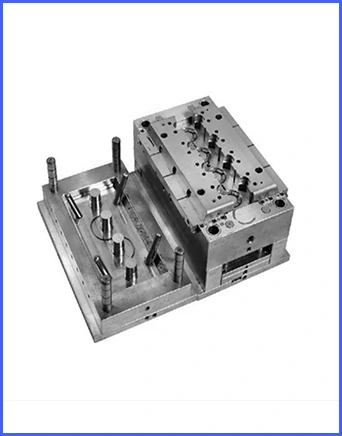Time to read: 6 min

Injection molding is a sophisticated manufacturing process that requires meticulous design considerations to ensure the quality and functionality of plastic parts. This guide provides essential design rules, process control insights, and mold design tips to navigate the complexities of injection molding and achieve high-quality results.
The Significance of Design in Injection Molding
Injection molding is a high-precision technique where molten plastic is injected into a mold to form specific shapes. The design of both the mold and the part plays a crucial role in the molding process's success.
Determining Manufacturing Complexities
A well-analyzed design allows prediction of potential manufacturing challenges, reducing uncertainties and clarifying the mold's shape and structure.
Ensuring Manufacturing Feasibility
Design for injection molding confirms the method's viability from the outset, saving time and costs and ensuring affordability and efficiency.
Preventing Part Failure
A proper design process is vital to avoid defects that could impair the functionality and aesthetics of injection molded parts.
Injection Molding Part Design Considerations
Careful design is essential to prevent production errors and associated costs.
Wall Thickness
Maintain uniform wall thickness, ideally between 1.2mm and 3mm, to ensure even cooling and material flow.
Parting Line
Design a simple and straight parting line to minimize defects and production costs while considering its visual impact on the final product.
Draft Angle
Incorporate draft angles to facilitate part ejection from the mold, with the average draft increasing by 1 degree per inch of depth.
Ribs and Bosses
Design ribs and bosses for structural integrity and part alignment, with dimensions that account for material shrinkage.
Gate Location and Type
Choose gate types and locations that minimize their impact on part aesthetics and structural integrity.
Ejector Pins
Place ejector pins on flat surfaces to ensure smooth part ejection and minimize marks on the part.
Undercuts and Threads
Avoid undercuts and threads that complicate ejection; use lifters and sliders for internal undercuts.
Round Corners
Opt for rounded corners to improve material flow and reduce stress and cracking.
Surface Finishing
Select the appropriate surface finish to determine the required tooling and material, considering post-production finishing needs.
Material Selection
Choose materials based on shrinkage rate, assembly requirements, and cost to ensure part performance in its intended environment.
Injection Mold Design Guide
Mold design is critical in plastic part manufacturing, affecting the accuracy and consistency of the molding process.
Mold Base and Cavity Layout
Ensure the mold base is durable and the cavity layout allows easy access for maintenance.
Cooling System Design
Uniform cooling is essential for solidifying the plastic and controlling shrinkage.
Runner and Gate Design
Optimize the runner and gate system for efficient material flow and defect prevention.
Ejection System Design
Design an ejection system that removes parts without damage, considering part geometry and stiffness.
Mold Materials and Surface Finishing
Select mold materials with high melting points and good wear resistance, and ensure precision machining to avoid surface defects.
Injection Molding Process Control for Quality Plastic Parts
Strict process control is vital for ensuring high-quality injection molded parts.
Machine Selection and Setup
Choose the right machine with adequate clamping force, injection unit size, screw type, and temperature control.
Process Parameters and Optimization
Monitor and adjust parameters like injection pressure, temperature, holding pressure, cooling time, and ejection for optimal results.
Quality Control and Inspection
Implement regular quality control measures to ensure parts meet quality, safety, and performance standards.
Common Injection Molding Design Issues and Solutions
Understanding common defects and their solutions can help prevent costly production errors.
Sink Marks and Warping
Prevent sink marks and warping by ensuring gradual cooling, even wall thickness, and adequate holding pressure.
Flash and Part Sticking
Address flash and part sticking by optimizing mold design, clamping force, and using proper release agents.
Short Shots and Burn Marks
Avoid short shots and burn marks by improving ventilation, adjusting injection speed and pressure, and using appropriate material viscosity.
Gas Traps and Voids
Eliminate gas traps and voids by increasing mold temperature, redesigning the runner system, and using materials with lower viscosity.
Parting Line Mismatch and Deflection
Correct parting line mismatch and deflection by ensuring proper mold clamping, consistent mold temperature, and optimizing molding parameters.
Conclusion
Injection molding is a powerful technique for creating custom plastic components. Adhering to a comprehensive design guide ensures cost-effective production and high-quality outcomes. Unofactory offers expert support and advanced services to help you achieve superior injection molded parts.




